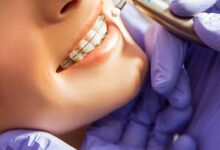
Ankle Sprains – Do You Need to See a Physiotherapist?
Ankle sprains are among the most frequent reasons to visit a Physiotherapist. They often occur during sports activities or vigorous body movements. Even though they are not threatening your bones’ and ligaments’ health, they can be extremely painful and should be carefully addressed. Many Physiotherapists deal with ankle sprains daily, and that’s why Pilates Classes from Movement 101 are so popular.
Having an appointment with your Physiotherapist is the right approach if you experience an ankle sprain. However, it’s always useful to learn more about the ankle anatomy, the different types of ankle injuries, and how your physical therapist could help.
Table of Contents
Ankle Anatomy
The human ankle has two separate parts. One joint bends the foot up, and another joint bends the foot in and out. During the normal standing position, the ankle turns slightly to the inside and helps with the right body balance. With an injury, the outer ligament turns the foot into an abnormal inside position. That causes bruising and swelling and may tear some ligament fibres.
Why Are Ankle Ligaments So Sensitive?
Ankle ligaments are extremely flexible and assist the correct body posture and foot movement. Numerous nerve endings give constant information to the brain about the foot position. Even the slightest stretching of the ankle ligaments could initiate an immediate response from the body. The brain would activate the right muscles to bring the foot back to its normal position and help the body find its natural balance.
When an ankle sprain happens, the body can’t react to pain quickly. That’s why the body reacts to ankle bruising by creating an inflammation to help the ligaments heal faster. It’s important to note that ankle sprains do not involve any bone fracture. However, they should always be treated right away to avoid any future issues.
Are There Specific Exercises To Make Before Returning To The Field?
A knee-to-wall test remains one of the most effective ways to measure the range of motion for ankle joints. Patients need to touch the wall with their knee and try to move their foot away from it without letting their heel get elevated. That test will reveal any differences between the two feet and give your Physiotherapist enough evidence of the pain severity.
Another test athletes use to determine their ankle joint injury is the hop length test. Your physical therapist asks you to stand on your injured ankle and start hopping at a moderate pace. The distance between the big toe and the heel position at the end of the hopping could determine the best way to deal with the ankle sprain. The same test could be done with a staircase. Patients are asked to elevate their feet using their toes. They move the foot upwards until they feel the pain. That’s how physical therapists can measure the damage done by an ankle sprain.
The Physiotherapist Role In Ankle Sprain Treatment
The role of your physiotherapist in ankle sprain treatment is fundamental. Physicians may prescribe some painkillers and anti-inflammatory agents, but it’s your physiotherapist who will help you with bettering your mobility and rehabilitating your ankle.
The first step by your Physiotherapist is to ensure that there is no underlying fracture on your ankle joint. A basic X-ray could show your bones’ condition and help your physiotherapist make the right decision about your ankle sprain injury.
After the initial diagnosis and assessment, your physical therapist goes on to treat your ankle sprain with hands-on physiotherapy. That includes massage to the injured area and even biofeedback with electromagnetic waves. It’s also important to create an understandable exercise program such as walking to help restore your physical gait. It’s natural for ligaments to become less flexible when staying idle for many days. Therefore, elevating the patients who have suffered an ankle sprain gives them better rehabilitation results in the long run.
Finally, your physiotherapist will determine the right time to return to sports activities or other vigorous activities. People who perform sports activities professionally need more diverse rehabilitation programs that focus on muscle development around the ankle joint. Even people who perform sports occasionally need to have a precise exercise routine according to their unique needs.
Ankle sprains are easy to deal with when you seek a Physiotherapist consultation as soon as possible after the accident. Following their advice and actively participating in all therapies is the only way to regain your previous ankle mobility. That will help you recover with the least possible consequences.








